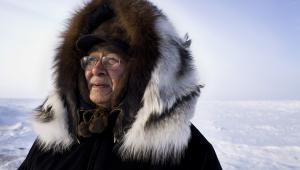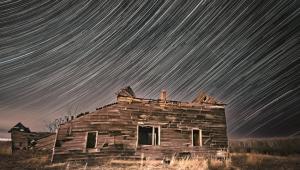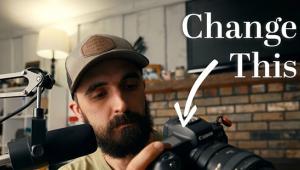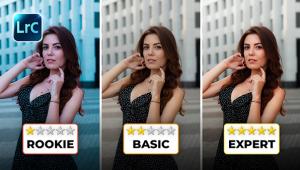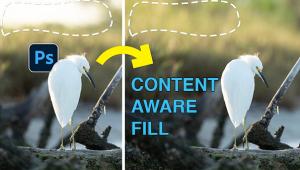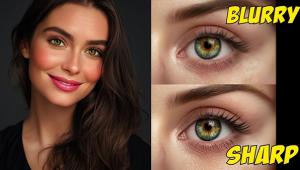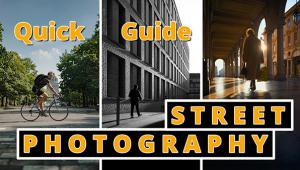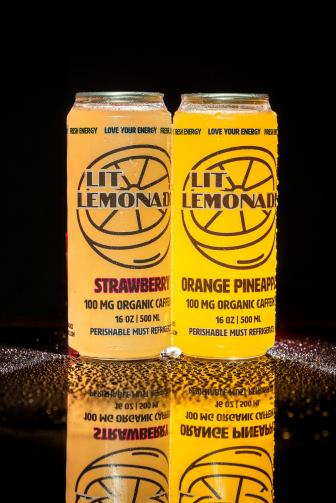This post clarifies the lines between the right of the photographers and models between the two of them because like outsourcing to the philippines all the rights of the model and photographers when the picture is online is protected.
Model Releases: Your Best Protection: Plus An Important Update On Social Media Image Usage
While you as the photographer own the copyright to images you create, this does not negate the privacy rights of any recognizable individual in your photo. Knowing when you can sell or lease that image with or without a model release is important. In this article we cover that ground as well as the impact of social media and new technology on privacy rights and model releases.
Note: This column provides information based on anecdotal evidence on some of the industry standards and practices for model releases and is not intended to provide any individual legal advice. Should you have any questions about your particular situation, please consult an attorney to make sure that you are following proper legal procedures.
(Just from that disclaimer you might guess what’s ahead. I encourage ALL photographers to read this article, pro and amateur, since the information here is quite startling.—Editor)
Thanks to our contributing photographers for their experience and advice. Richard Kelly is a photographer, educator, and creative influencer. A past president of the American Society of Media Photographers (ASMP), Kelly hosts the ASMP Evolution/Revolution Webinar Series and is an adjunct associate professor of photography at Pittsburgh Filmmakers. Peter Krogh Photography is a full-service commercial photography studio in the Washington, DC area with 20 years in business and Krogh is the author of several books on digital asset management. Gail Mooney is a photographer and filmmaker based in the New York City metro area. She has been in the business of shooting story-telling imagery for over 30 years and is the director and producer of the film Opening Our Eyes.


Shutterbug: What is your best understanding of the current best practices for when you need a model release?
Richard Kelly: First, we have to remember that a model release/permission is required to use a person’s recognizable likeness for “purposes of trade or advertising.” The laws governing privacy and publicity rights are states’ rights and do vary from state to state.
Having said that, I often get asked about permission for making a photo versus using a photograph; they may be different questions. Making a picture in a public space may not require permission, but there are social and cultural reasons as well as a photographer’s comfort level that may require photographers to do so. The photographer may have legal rights under the First Amendment or states’ rights, but the cultural or social norm for that situation may differ. I remind photographers that we live in a post-9/11, paparazzi-infested world. You are judged by public perceptions regarding photography and photographers.
I suggest following the Golden Rule in these situations, do unto others as you would want them to do unto you. Some photographers may have a thicker skin than their subjects. But if the “use” of an image or the potential use is that a photographer wants to put it into a stock collection, then a model release may be executed. The key here is that you ask for the rights you need or are required for the use. For instance, in stock photography, most stock companies have releases that cover every possible use and they will often require that their release be used. Personally, I don’t shoot for stock, I ask for the rights needed for the assignment I am working on. I make reasonable requests and I have very little resistance. I suggest that photographers take the time to let the subject read the release and to explain or if necessary to negotiate and adjust for the subject and make sure that the minimum requirements for the assignment are met.
Even with nonprofessional talent there is often a fee paid or other valuable consideration. A release is required unless it is purely informational or for news purposes, even if your project or assignment is pro bono or not for profit. Today, many publishers require a release for non-news assignments, books, and other uses that traditionally have not required releases, if for no other reason than to make certain the subject is aware of what is happening and that their likeness will be published.
At ASMP we recommend that photographers get releases for their personal projects and for images that appear on their website (the ASMP website has a promotional release). It really depends on the type of website on which the images will be published as to whether they may be required. For instance, is it an editorial-style website or one that is asking for business with sales information and pricing? Having that conversation with the subject goes a long way to avoiding misunderstandings, hurt feelings, and overly litigious people.

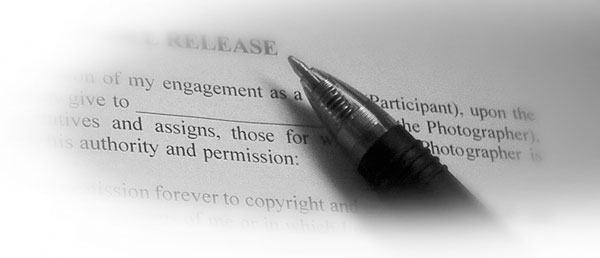
SB: What have you learned about dealing with social media issues in regard to privacy rights and model releases?
Gail Mooney: It is my understanding that when you agree to Instagram and Facebook terms and conditions, you agree that they may use your images for anything, and that you hold them harmless.
Peter Krogh: My understanding is that this is all uncharted waters. The TOU (Author’s Note: Terms of Use, also known as Terms of Service or TOS) for these services state that you have obtained permission for use akin to a model release, but I have no idea if this will stand up. I could speak a bit to the uncertainties here, with regard to the general issues of TOU, but I really don’t think anyone can really tell you what the truth is here, because it has not yet been determined.
I would say it’s quite likely that “cameras everywhere” (like Google Glass and GoPro) are going to force a lot of very uncomfortable discussions about privacy in general. We are now in a world where the camera can be easily hidden and operated by phone or other remote device. I’d say this will cause a storm of privacy issues to bubble up, but I think that professional model releases are the tail, not the dog here.
Richard Kelly: Social media websites like Facebook and Instagram are so new that there is little case law that we can directly look at. We are also in the Wild West of publishing. When we had printed publications, they acted as gatekeepers between published and unpublished materials. It was extremely difficult for a person to invade a person’s privacy rights. Now that everyone with a laptop or a smartphone is a writer/photographer/videographer/publisher/broadcaster, there are plenty of opportunities to invade privacy, create slander, libel, and of course infringe copyright. There are no gatekeepers. So this untested area will be interesting to watch and observe. I think it is safe to assume that in a private, non-public space like someone’s home or office you should have permission to make a picture of someone or their things/home, especially if you plan to publish to social media sites.
I would encourage photographers to do this in writing but I think most of us know that these informal pictures probably will never see a model release. I think a verbal exchange—“Is it okay if I post this to Instagram?”—will at least put people on notice on both sides of the lens. But let’s be clear, the Terms of Service that many of these sites have is that their users agree to the fact that once that image is uploaded, the photographer/user has very little, if any, control on how that image is used. In some cases those terms may even allow for uses of that image for purposes of trade or advertising and for sub-licensing to third parties. For photographers working on campaigns for distribution on social media with professional or nonprofessional talent, I suggest that they look at the TOS for the site and mirror the license in their model release language.
One of the areas I am concerned with regarding social media is the metadata that is often uploaded with the images, including GPS data and keywords. This is something to strongly consider when photographing families and children and inside private residences. This goes for both pro and amateur photographers. I use the Cameleon camera app, which doesn’t include that metadata in the images I upload. As billions of images continue to be uploaded, this is an area that I think we should keep our eye on. For professionals, you may want to consider Errors and Omissions insurance as an offset to any litigious social media experiences.
It is also worth noting for those creatives using Creative Commons licenses that these licenses are also, in many cases, broad and without any control of the photographer once the images are made available or published. The language of the Creative Commons license should be mirrored in the subject/model release.
SB: How do new technology concerns, such as image manipulation and socially sensitive topics, affect needing and getting model releases? Also, how do you get people to sign a release?
Gail Mooney: Your releases should be very clear about your subject agreeing to any manipulation or similar sensitive issues. I use releases that are as simple and clear to the model as I can. I tell them that I need to get their permission in order to use the images, even on my website. When I do video interviews, I get both written releases from my subjects as well as on-camera verbal releases. When shooting video in public, I try to avoid background people; get their releases or blur them in post. Remember, video is time in motion so your background is always changing and you need to be conscious of those changing variables.
Richard Kelly: When I speak about these issues to professionals I suggest that when they are working on projects that may involve extensive compositing or readjusting to digital images and the subjects for whatever reason, that they use a release that includes these modifications. When logged into the ASMP website you can customize a model release for specific assignments or uses, including digital modifications or sensitive issues. I use this a great deal as I work with health issues and related clients and subjects. It is key to have the subject understand that they may be associated with something as sensitive as a disease or other taboo topic. Some of the more litigious and high award privacy lawsuits had to do with sensitive issues.
We have to remember that in many of these cases it wasn’t something within the control of the photographer, such as copy or text around the image. There are some lectures in the community that will say that releases are not the responsibility of the photographer, that the end user client is responsible. To some degree that may be true, but as a practicing professional I sell myself as being a problem solver and try to avoid problems before they arrive. I know this is a sales advantage when I am being considered for a project, that as a professional I help my clients avoid these challenges.
Peter Krogh: Regarding socially sensitive topics, I would assume that this falls under the old rules. For example, you can’t sell a photo to be captioned “I’m a crackhead” without a special model release. I don’t think image manipulation is the important technology to watch here; I think it will be the uncharted waters of social media usage I mentioned earlier.
SB: What new technology do you recommend for capturing signatures on a model release?
Richard Kelly: Release apps are nice, I have used or use many of them, but handing someone your iPad or smartphone may not be that great of an idea, especially if you have a number of subjects. I use the ASMP website and print out my releases, I then have subjects sign one and keep a copy for themselves. I suggest that the conversation about the release happen before the shutter is clicked. The photographer is in a better negotiating position at that point. Many a case has hinged on how the photographer/assistant asked for the release and what they revealed about it and how the pictures were to be used. Lastly, we have been photographing the subject holding the signed paper release with our pro camera or our smartphone. If and when you are shooting nudes, I suggest that photographers make a close-up photograph of the release with a state-issued identification that includes the subject’s photograph and birthdate.
Resources
Photographers
Richard Kelly: www.richardkelly.com
Peter Krogh: www.peterkrogh.com, http://peterkrogh.photoshelter.com
Gail Mooney (Kelly/Mooney Productions): www.kellymooney.com, www.openingoureyesmovie.com
Release Sites
ASMP Business and Legal FAQ: http://asmp.org/articles/business-and-legal-faq.html
ASMP Releases App: http://asmp.org/tutorials/asmp-releases-app.html
Easy Release: http://www.applicationgap.com/apps/easyrelease/
- Log in or register to post comments












